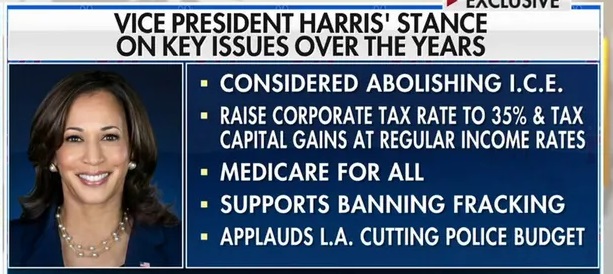The Great American Gaslighting: Mainstream Media’s Reinvention of Kamala Harris
Kamala Harris and the Gaslighting Of America – In the annals of American politics, the vice presidency has often been a position of quiet support, a role requiring both political acumen and a knack for staying in the shadows. Yet, the current narrative surrounding Vice President Kamala Harris represents a striking departure from this norm. Once beset by historically low approval ratings, Harris is now being touted by the mainstream media as the savior of American democracy. This remarkable turnaround, orchestrated through an intense campaign of narrative reengineering, raises important questions about media influence and political reality.
“Gaslight – verb gaslighted or gaslit; gaslighting; gaslights transitive verb 1: to psychologically manipulate (a person) usually over an extended period of time so that the victim questions the validity of their own thoughts, perception of reality, or memories and experiences confusion, loss of confidence and self-esteem, and doubts concerning their own emotional or mental stability : to subject (someone) to gaslighting“
https://www.merriam-webster.com/dictionary/gaslight
Just a few short months ago, Vice President Harris was struggling. Her approval ratings were among the worst for any vice president in modern history. Public opinion polls consistently painted a bleak picture, with Americans expressing doubts about her leadership, effectiveness, and handling of key issues such as immigration and national security. Critics from both sides of the political spectrum lambasted her, and the administration faced mounting pressure to address her perceived inadequacies.
However, a seismic shift in media portrayal has transformed Harris from a beleaguered vice president into a beacon of hope for American democracy. Mainstream media outlets, once critical of her performance, now extol her virtues and emphasize her historic role as the first female, Black, and South Asian vice president. This shift is not merely a matter of emphasis but a wholesale rewriting of the narrative surrounding her tenure.
The media’s strategy is multifaceted. First, there is a concerted effort to highlight Harris’s symbolic significance. Features and op-eds frequently stress her groundbreaking achievements, her representation of diverse communities, and her potential to inspire future generations. This emphasis on identity politics serves to create a protective shield around her, where any criticism can be easily dismissed as an attack on progress and inclusivity.
Second, the media has embarked on a campaign to reframe Harris’s policy missteps as learning experiences or as the result of external factors beyond her control. Reports that once scrutinized her handling of the southern border crisis now blame systemic issues, bureaucratic inertia, or the Trump administration’s legacy. In essence, Harris is positioned as a tireless worker battling entrenched problems, rather than a leader falling short of expectations.
Third, there is a noticeable pivot in focus towards her future potential rather than her past performance. Speculative pieces about Harris’s prospects as a presidential candidate in 2024 abound, painting her as a seasoned stateswoman ready to step into the Oval Office. This future-oriented narrative conveniently sidesteps the difficulties she has faced in her current role, suggesting that her true strengths will emerge on a larger stage.
The effectiveness of this media campaign is evident in the gradual shift in public perception. Approval ratings, while still mixed, show signs of improvement. More importantly, the conversation about Harris has shifted from her immediate failings to her long-term potential and symbolic importance.
However, this dramatic reinvention prompts several critical reflections. First, it underscores the immense power of the mainstream media in shaping political narratives. The ability to transform a figure with low approval ratings into a democratic savior highlights the media’s role not just in reporting news but in creating and sustaining political myths.
Second, it raises questions about the integrity of political journalism. The apparent willingness to pivot from critique to praise suggests a susceptibility to external pressures, whether from political allies or broader societal movements. In the pursuit of an uplifting narrative, there is a risk of glossing over genuine issues that deserve scrutiny.
Finally, the Harris reinvention saga reveals the complexities of identity politics in contemporary America. While celebrating diversity and representation is undoubtedly important, it should not come at the expense of holding leaders accountable for their actions and performance. Elevating Harris as a symbol of progress should not exempt her from the rigorous evaluation that any public official deserves.
In conclusion, the mainstream media’s rebranding of Kamala Harris from a vice president with record-low approval ratings to the savior of American democracy is a masterclass in narrative engineering. This transformation, achieved through a combination of symbolic emphasis, reframing of past issues, and a focus on future potential, demonstrates the media’s formidable power in shaping political realities. As we navigate this landscape, it is crucial to maintain a balanced perspective, recognizing both the symbolic significance and the substantive performance of our leaders.




